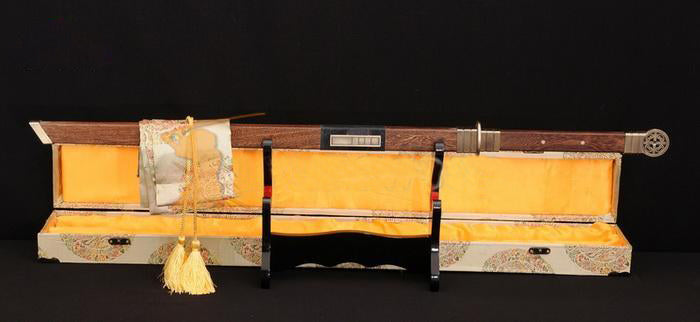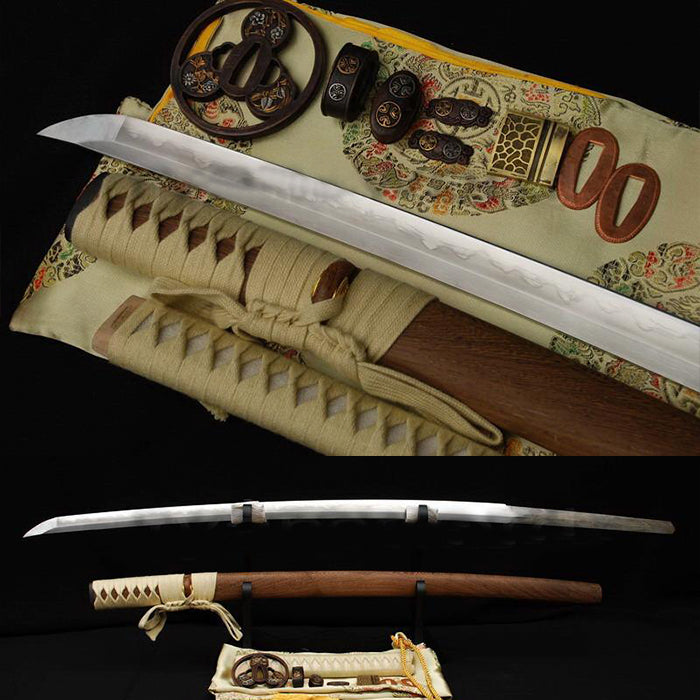Longsword - Functionality and Aesthetic for Martial Artists and Collectors
Are you a passionate sword collector or martial artist? You've probably stumbled upon one of the most popular and admirable categories of Japanese swordsmanship - longswords.
In fact, as a country, Japan is best known and respected for its unique design, premium materials, and handicrafts. Some of their most iconic longswords are believed to defeat every opponent.
Let's see what you learn in this article:
-
The different types of longswords
-
Use, origin, and differences between then
-
Symbolism
-
Collectors' tips for maintenance
-
Useful information for martial artists
Longsword: Meaning, Types, Origin,
Longsword refers to a blade longer than 26 inches, expressed in Japanese traditional measurement units - two shaku. Longswords can be different blade shapes, straight and curved, and have various handle designs, people often call these longswords Daito.
Longer reach determined the specific use of these great weapons on the battlefield. Historians and weapon experts believe that Japanese longswords were the deadliest samurai weapons of their time.
Warriors used them to break formations and as pikes.
Here are the most distinguishable types of longswords:
-
Nodachi - four feet long blade
-
Odachi - curved long blade, similar to Nodachi
-
Naginata - the most famous battle sword, the longest Japanese sword ever made
-
Nagamaki - the same blade and handle length
Symbolism
Longswords are heavy two-hand swords, so only strong warriors can carry them. These samurai swords stand for strength, honor, and bravery. Like other samurai swords, they symbolize discipline, justice, compassion, and integrity.
Collectors' Tips for Maintenance
If you are new in the sword world, it is easy to get intimidated by all the tips available online for proper sword maintenance. Longswords are beautiful, and to keep their original look and performance at peak, here are a few tips to use:
-
Use mineral oil for oiling the blade every six months
-
Avoid industrial oils, as they can go rancid and cause more damage
-
Store the sword in a climate-controlled environment, ideally in a space with low humidity and no water exposure
-
Display the sword horizontally with the handle higher than the scabbard or use a sword stand
Helpful Information for Martial Artists
Longswords are typical props in different martial arts, such as Kendo and Tameshigiri, and choosing the one for you requires a bit of knowledge and experience. Here is what to look for in your training longsword:
-
Thin blade and balanced weight
-
One-year warranty or longer
-
Entry-level swords specifically designed for beginners
-
Higher-end swords for experienced swordsmen
-
The traditional way of craftsmanship for dedicated collectors and master martial artists
-
Blades made from carbon steel
FAQ
Could a longsword break a katana?
It can happen, but various factors need to be considered. For example, if the swords are of identical quality and the opponents have similar combat skills, a longsword may break a katana because it has a longer reach and massive impact. However, both swords are lethal weapons and have advantages that skilled swordsmen can use to defeat opponents.
Are longswords better than katanas?
Samurai katana is an excellent option if you need a fast sword for close combat and you require agile movements. They are suited for cutting and slicing. On the other hand, longswords are good for the battlefield because of their exceptional reach, and they are great for thrusting.
Can a longsword cut through samurai armor?
In most cases, the answer is no. But the armor would get heavily dented.

 Folded Steel Samurai Wakizashi Sword Sharp Blade Iron Tsuba
Folded Steel Samurai Wakizashi Sword Sharp Blade Iron Tsuba
 Full Tang Blade Chinese Sword Dao Folded Steel Sharp
Full Tang Blade Chinese Sword Dao Folded Steel Sharp
 Full Tang Blade Japanese Sword Samurai Katana Shark Skin Saya
Full Tang Blade Japanese Sword Samurai Katana Shark Skin Saya
 Clay Tempered+abrasive Japanese Samurai Sword Katana Full Tang Balde Sharp
Clay Tempered+abrasive Japanese Samurai Sword Katana Full Tang Balde Sharp









